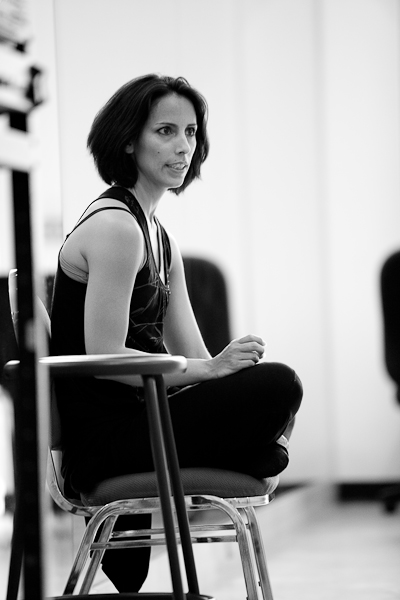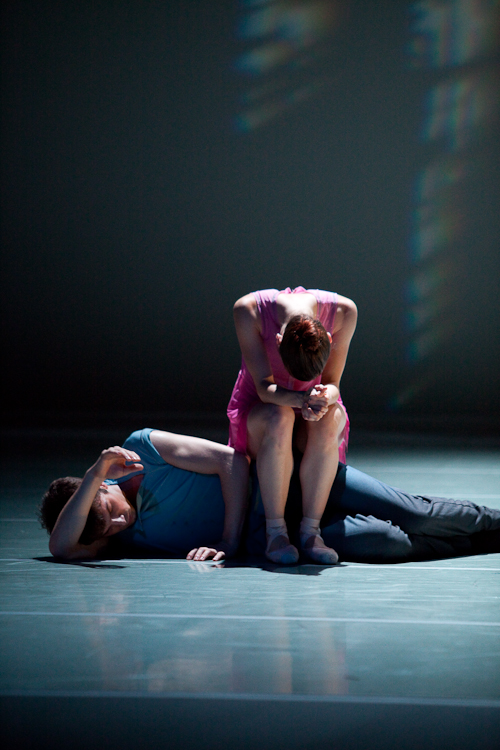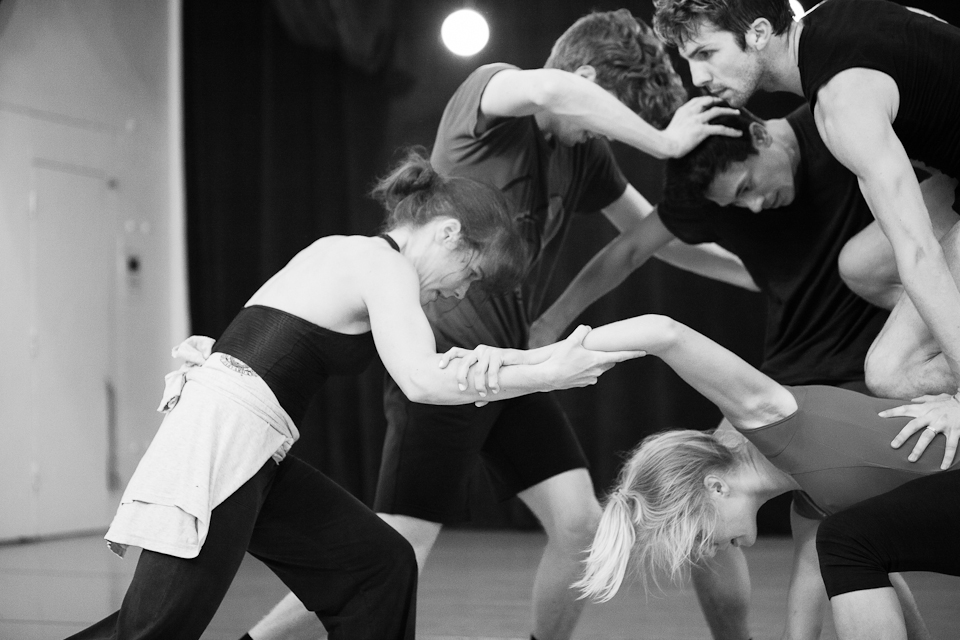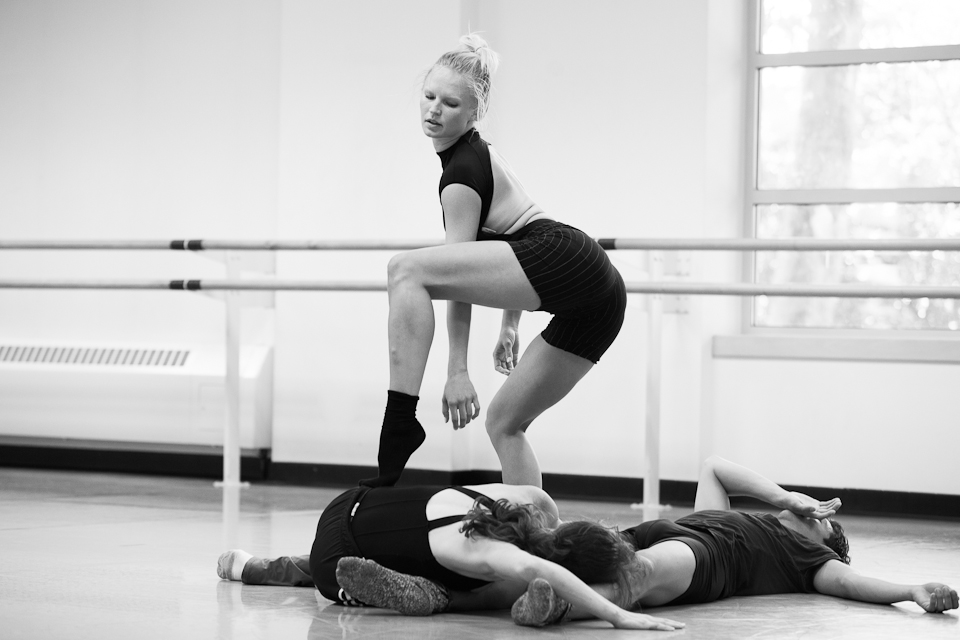Annabelle Lopez Ochoa’s previous piece for Whim W’Him, Cylindrical Shadows
(further developed this last spring for Pacific Northwest Ballet) was grave, elegiac.
Set mostly to beautiful, classical music, it offered a mournful but ultimately serene coming-to-terms with unexpected sorrow.
Her vision for her newest Whim W’Him work, CRAVE (choreographed this June and early July in Seattle, for performance in January, 2013)—with its jangling sound, jagged movement, glittery costumes, garish colors and throbbing lights—could not be more different in tone, pace, music or theme. Yet they are alike in that, as Annabelle says, “Most of my pieces are inspired by human behaviour.”
The seed for Cylindrical Shadows was her reaction to the sudden death of a young and apparently healthy dancer friend.
For CRAVE, she says, “I drew my inspiration from Scottish youth clubbing on the weekends, which I had the opportunity to observe during my two months stay in Glasgow in the winter of 2012” (when she was there creating her first full-length narrative ballet, the highly praised A Streetcar Named Desire, for the Scottish Ballet).
“The idea of
 To embody the confused and ultimately destructive impulses portrayed in CRAVE, says Annabelle, “I’m putting five individuals in the atmosphere of a club. Lost in the midst of loud and violent music, that is a place to escape the daily routine. They find themselves lonely, unaccepted and unable to connect really.”
To embody the confused and ultimately destructive impulses portrayed in CRAVE, says Annabelle, “I’m putting five individuals in the atmosphere of a club. Lost in the midst of loud and violent music, that is a place to escape the daily routine. They find themselves lonely, unaccepted and unable to connect really.”
These are people whose daylight hours are spent at drab jobs in a stony city with heavy, gray winter weather and looming skies. So on one level, CRAVE depicts a desperate seeking to bond with others, a feverish attempt to fight off the anomie and hopelessness of dead-end lives. The protagonists, although imagined as five quite separate, distinctive individuals, adopt common fashions, behavior and speech, “as a flock.” It is, their choreographer remarks, “their way to feel connected.”
“But,” she also asks, “is the communication real in the realm of clubs, drugs and alcohol? Aren’t we numbing ourselves to lose our own inhibitions, doubts and insecurities about who we really are and what we really struggle about?”
At this point, CRAVE becomes an exploration of a quite different question about the human heart: “What is it in the human nature,” Annabelle inquires, “that we are inclined to search and push our boundaries, as much in a destructive as in a constructive way?
I personally believe that somewhere deep inside we adore the feeling of invincibility. Time stands still for a moment, the experience is intense and nothing can stop us. Delightful!”
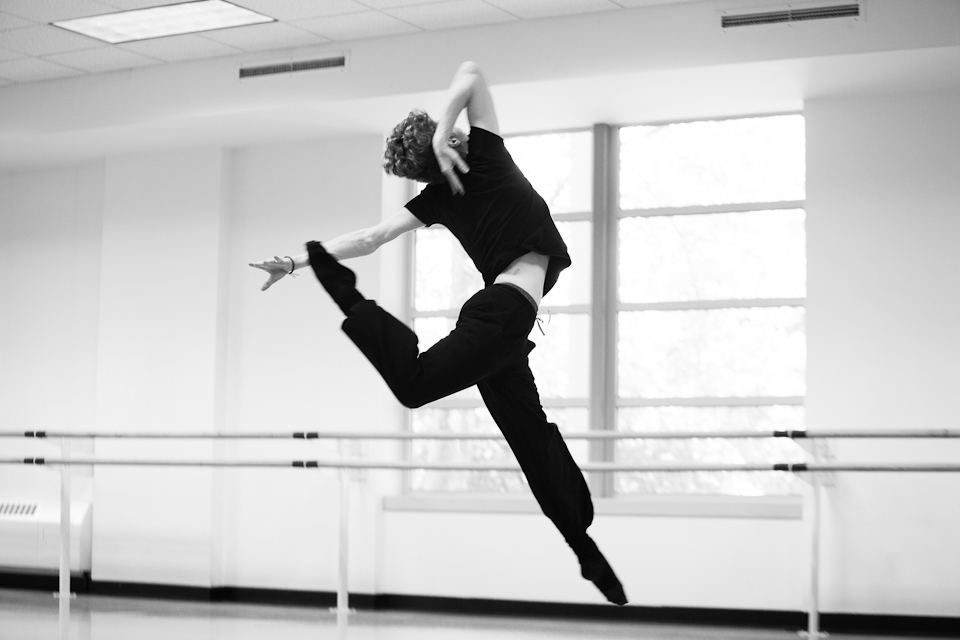 I am reminded of an NPR story some years ago on why people with bipolar disorders (or even just tendencies in that direction) have such a strong tendency to stop taking their medication—because they miss the heady, soaring sense of invulnerability associated with the manic state. The same can be said of those who rely on drugs and alcohol.
I am reminded of an NPR story some years ago on why people with bipolar disorders (or even just tendencies in that direction) have such a strong tendency to stop taking their medication—because they miss the heady, soaring sense of invulnerability associated with the manic state. The same can be said of those who rely on drugs and alcohol.
Some of that urge to achieve such states arises from personal disappointment, internal conflicts, unfulfilled hopes. But it can also originate or be encouraged by forces outside ourselves. As Annabelle adds, “On the other hand our society, that is leaning more and more on visuals, makes us yearn for fame, glamour and success. Everything that shines is glamour, glamour is success, success is happiness. And so the youth goes out dressed-up like pseudo movie stars escaping their dull daily routine to taste a drop of invincibilty. It is all so attractive.”
“You speak of searching and pushing our boundaries, ‘as much in a destructive as in a constructive way'” I ask and wonder if there are moments of real connection in CRAVE. “There is one,” she says, “when the five are in a line in a circle.”
But she pauses and adds, “A missed connection is a kind of dialogue. It can still be strong and poetic without being beautiful in a conventional sense.”
Next posts up:
Seeing Hedda Gabler as dance.
A profile of Whim W’Him’s newest dancer, Lara Seefeldt.
Annabelle and the dancers on the experience of creating CRAVE.
